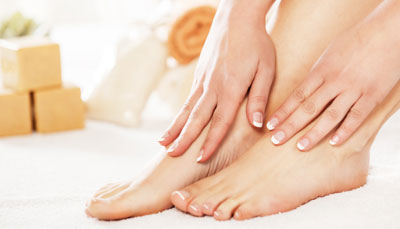
Diabetes is a chronic condition that affects millions of people worldwide. One of the most common and serious complications associated with diabetes is diabetic foot, which can lead to severe health issues, including infections, ulcers, and even amputations. However, with proper foot care, many of these complications can be prevented. In this article, we will delve into the importance of foot care for individuals with diabetes, focusing on proper hygiene, regular inspections, and the use of appropriate footwear.
1. Reducing the Risk of Ulcers: People with diabetes are more prone to foot ulcers due to poor circulation and nerve damage. Regular foot care can help identify potential issues before they escalate into ulcers.
2. Preventing Infections: Diabetes can weaken the immune system, making it harder for the body to fight infections. Any cut, blister, or sore on the foot can become a gateway for infections, which is why meticulous hygiene is crucial.
3. Minimizing the Risk of Amputation: Unmanaged foot problems can lead to severe infections that may ultimately require amputation. Proper care can significantly reduce this risk.
Maintaining good foot hygiene is the foundation of diabetic foot care. Here are some essential tips:
1. Daily Cleaning: Gently wash your feet with warm water and mild soap. Avoid hot water, which can damage the skin, and make sure to dry your feet thoroughly, including between the toes.
2. Moisturizing: Apply a moisturizer to prevent dry and cracked skin. Avoid putting lotion between the toes, as it can create a moist environment that promotes fungal growth.
3. Trimming Nails: Trim your toenails straight across and avoid cutting too close to the skin to prevent ingrown toenails.
4. Avoiding Barefoot Walking: Never walk barefoot, even at home. This helps protect your feet from injury and infection.
Frequent foot inspections are vital for early detection of problems. Here's what to look for:
1. Blisters, Cuts, and Sores: Check your feet daily for any unusual sores, cuts, blisters, or redness. Use a mirror if you have trouble seeing the bottom of your feet.
2. Changes in Skin Color or Temperature: Note any unusual changes in skin color or temperature. Cold or blue feet may indicate poor circulation.
3. Ingrown Toenails: Inspect for ingrown toenails, which can lead to infections.
4. Swelling: Look for swelling, which may be a sign of an underlying problem.
Choosing the right footwear is essential for diabetic foot care:
1. Comfort and Fit: Select shoes that are comfortable and well-fitting. Ensure there's enough room for your toes and that the shoes don't rub or cause friction.
2. Supportive Insoles: Consider custom orthotic insoles to provide extra support and reduce pressure points.
3. Avoid High Heels: High heels and narrow-toed shoes can lead to foot problems. Opt for shoes with a wider toe box and lower heels.
4. Inspect Shoes: Check your shoes for foreign objects, rough seams, or any other factors that could cause irritation.
In conclusion, diabetic foot complications are serious but largely preventable. Proper foot care, including hygiene, regular inspections, and the use of appropriate footwear, is crucial for individuals with diabetes. By incorporating these practices into their daily routine, diabetics can significantly reduce the risk of foot-related complications, improve their quality of life, and maintain their mobility and independence.

